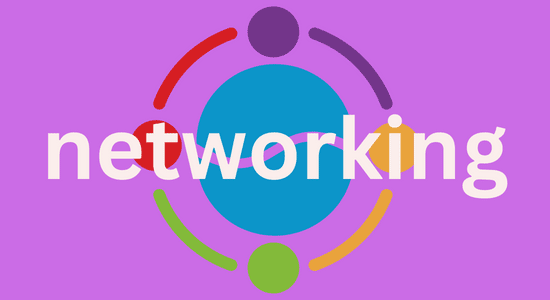If you've been working as a graphic designer or studying to become one for a while, then you're already lucky, you know. You have the skill, and that's precious. Yes, it's a highly competitive field to work in, hugely due to the fact that anyone can work from home, from any part of the world. But what other fields are not?
Unlike those who only started considering a design career, your solid experience can find exciting new opportunities and the chance for career progression.
I hope my following advice will help find better job or gig orders, whether you are at the beginning or your designing career, or you have been in the industry for a number of years but feel somewhat stuck at where you are now. Here are a few career tips for graphic designers that should help you to achieve your long-term goals and find success.

Did You Know?
- Employment Growth: The U.S. Bureau of Labor Statistics projected a 3% growth for graphic designers from 2020 to 2030, which is slower than average for all occupations.
- Median Pay: As of 2021, the median annual wage for graphic designers was approximately $53,380 in the U.S.
- Freelance Popularity: Over 21% of graphic designers were self-employed in 2020, reflecting the field's freelance viability.
- Industry Distribution: A significant portion of graphic designers work in specialized design services, advertising, public relations, printing, and publishing.
- Digital Media Growth: Employment of graphic designers in computer systems design and related services is projected to grow by 24% from 2020 to 2030.
- Social Media as a Tool: Many designers use social media platforms to showcase their work, with Instagram being a popular choice for over 75% of surveyed designers.
Build Your Portfolio
Most of the successful graphic designers know that one of the most important steps to take is to build their portfolio to impress. A portfolio is like a resume, it should contain your work history, skills and qualifications, but while a resume is usually all in writing, a portfolio can have a range of formats such as your photographic/illustration works, videos, and links to your website(s). It can be as graphical as you wish it to be.
This means that the style of your portfolio will represent your designing skill. But not just the style or layout of it, it should not be ambiguous. Whoever is interested to hire you should be impressed by your work experience, therefore the 'resume' part of your portfolio should be displayed clearly. Needless to say, it's important to keep your portfolio updated with work as it is completed whether this is work from a main job, freelance work or even personal projects.
Your portfolio is how you showcase your experience, talent and capabilities to future clients and employers and will be key for securing new work. In addition to the work itself, you should make sure that your portfolio contains detailed documentation on each project and testimonials from previous clients if you have any. If you don't - asking a few of them to submit a testimonial will be a good start, too.
Did You Know?
- Educational Background: Approximately 90% of graphic designers have at least a bachelor's degree.
- Skill Diversification: Designers proficient in digital tools and software, especially those related to web design and multimedia, have a competitive edge in the job market.
- Remote Work: The pandemic increased remote work opportunities for graphic designers, with many continuing to work from home post-pandemic.
- Job Satisfaction: A survey found that graphic designers rate their job satisfaction 3.5 out of 5, citing creativity and variety as major positives.
- Top Paying States: According to the BLS, the top paying states for graphic designers include Washington, D.C., Massachusetts, and New York.
- Continuing Education: Over 60% of graphic designers participate in professional development courses to update their skills.
- Online Portfolio Importance: Over 80% of graphic designers say having an online portfolio is crucial for securing work.
120+ Design Services by Penji
15% off the first month with the promo code CYBERCASH15

Don't forget to use the promo code!
Work On Your Soft Skills
Soft skills. What are they?
"Hard skills" are essentially, technical skills, therefore in your case, the actual proficiency that's expected from a graphic designer.
Whereas "soft skills" are things that are generally expected from any professional, such as;
- Communication skills, e.g. teamwork, leadership, public speaking, etc.
- Professionalism, e.g. basic business talk/writing, manners and attitude, productivity management, etc.
- Common sense, e.g. problem solving, facts and analysis, reasonableness, etc.
You already know that you need strong technical (hard) skills in graphic design and you may be constantly looking to improve these. But you should not overlook the importance of soft skills, as this is how you make a name for yourself and develop positive relationships with those that you work with.
Especially, describing visual images in words can be challenging. Even if you are good at describing, your clients may not be. So you're expected to understand what they're trying to say. Lack of communication can lead to waste of time and resources.
It doesn't mean that you should be capable of doing all the examples listed above. For example, no one expects everyone to have leadership skills. But the least you should do is to familiarize yourself with all aspects of communication, including listening, verbal, written and presentational skills.
A lot of graphic design is independent work, but when you work as part of a team, good communication skills will become a necessity. When you present your findings, listen to clients, compromise, accept differences (agree to disagree in a friendly manner), etc.
Did You Know?
- Gender Distribution: The field tends to be female-dominated, with women making up around 53% of graphic designers in the workforce.
- Industry Adaptation: Ongoing need for graphic design services in digital marketing, advertising, and user experience design.
- Average Freelance Rates: Freelance graphic designers can charge anywhere from $25 to $150 per hour, depending on experience and project complexity.
- Digital Skills Premium: Designers with expertise in UX/UI and interactive media may earn higher than the industry median.
- Global Employment: Graphic design is a global profession, with demand spanning across North America, Europe, Asia, and beyond.
- Demand in Gaming Industry: Increasing demand for graphic designers in the video game industry, emphasizing the need for creative and interactive design.
- Impact of AI and Automation: While automation impacts many industries, graphic design remains a field where creativity and human insight are irreplaceable.
Know How To Build A Graphic Design Resume
As I explained above, a resume is part of your portfolio. But some professionals including graphic designers prepare and update their portfolios and resumes separately according to different requirements. Some recruiters focus on looking at your career history, while some others look at your current career position, for instance.
In any ways, it is important to recognize that graphic design is a line of work that requires a resume that will be different from many other roles. This is why it is useful to look at graphic design resume examples online that can provide inspiration and show you what the best layout is as well as what information is required.
After all, your resume will be key for securing new work opportunities, so there is no harm in spending a good time to craft an impressive resume and ask others (e.g. your agent if you have) for advice.
Networking
Not everyone enjoys networking. You may see it as a waste of time because whatever community you belong to, there are always some 'serial networkers' who love to chat endlessly and aimlessly. With that said, we cannot deny the fact that networking is a way to create multiple professional circles. You will always benefit from having a large professional network that you can use to find new work opportunities, meet new people and improve your professional reputation.
But here's good news for those who work in a creative field like graphic designing.
Networking events do not have to take place in a physical location. They happen through Zoom meetings nowadays, or even via social media where you don't even speak to others face to face. While it makes it easier and quicker to gain trust by communicating with your face shown and your voice heard, virtual networking events on social media are advantageous for creators. Because they can send each other's sample work while they are on live chat and have it looked at by multiple people instantly.
If you can, try finding as many networking opportunities as you can and making your professional existence known. It will lead you to find clients who want to do business with you over and over again in years to come.
Where To Find A Graphic Designing Job
Here are the platforms you can check out to find opportunities:
Online Job Boards
- Indeed: A go-to for job seekers in various industries, including graphic design. You can find full-time, part-time, and freelance opportunities by searching for "graphic design jobs."
- Glassdoor: Not only can you search for jobs, but you can also get insights into company cultures and salaries for graphic design positions.
- LinkedIn: Pretty spam-infested but still a good networking and job board. Make sure your profile is up-to-date and showcases your portfolio. LinkedIn also allows you to apply for jobs directly on the platform.
Design-Specific Job Boards
- Behance: Known for its portfolio platform, Behance also has a job list where employers post design-specific roles.
- Dribbble: A community of designers sharing their work. Dribbble's job board is a great place to find freelance, full-time, and part-time design jobs.
- AIGA Design Jobs: The professional association for design offers a job board that lists high-quality opportunities in the design field.
Freelance Marketplaces
- Upwork: A popular site for freelancers in all fields, including graphic design. You can bid on projects that match your skills and interests.
- Fiverr: Especially good for beginners looking to build their portfolios. You can offer specific design services at your own set prices.
- Freelancer: Similar to Upwork, this platform allows you to compete for design projects by submitting proposals to potential clients.
Creative Staffing Agencies
- Creative Circle: A staffing agency that connects creative professionals with freelance and full-time opportunities in design, marketing, and advertising.
- The Creative Group (Robert Half): Specializes in placing creative talent in various industries, offering both temporary and full-time job placements.
- Aquent: Focuses on placing designers in digital, creative, and marketing positions on a freelance or full-time basis.
Direct Outreach and Networking
- Personal Network: I've already told you - never underestimate your own network. Reach out to former classmates, professors, and colleagues to let them know you're looking.
- Portfolio Websites: Platforms like Behance and Dribbble not only allow you to showcase your work but also to be discovered by potential employers who browse these sites looking for talent.
- Design Conferences and Meetups: Attending industry events can be a fantastic way to meet potential employers and learn about job openings.
Career Tips For Graphic Designers: Do You Have What It Takes?
When we talk about being a graphic designer, creativity tops the list, doesn't it? It's the bread and butter of the trade. You need to come up with fresh ideas that stand out. Think about it: every project is a chance to tell a story, visually. Whether it's designing a sleek logo or an entire marketing campaign, your creative spark can make or break the project.
But it's not only about having great ideas. The ability to see things differently and solve problems in unique ways is hugely beneficial. Sometimes, you'll face a brief that seems impossible. That's where your creativity really shines through. By thinking outside the box, you can turn the toughest challenges into your most impressive work. Cool, right?
So, do you have what it takes to be a graphic designer? If you're creative, tech-savvy, good with people, and always ready to learn, you're on the right track. Remember, every designer started somewhere. With passion and persistence, you can carve out a successful career in this dynamic field.




